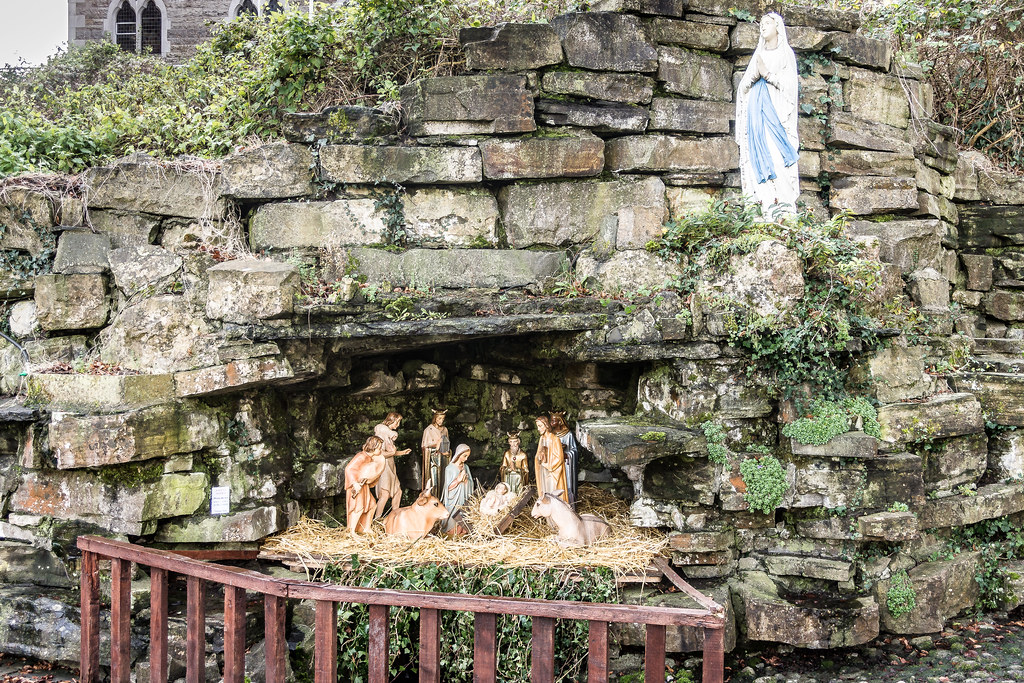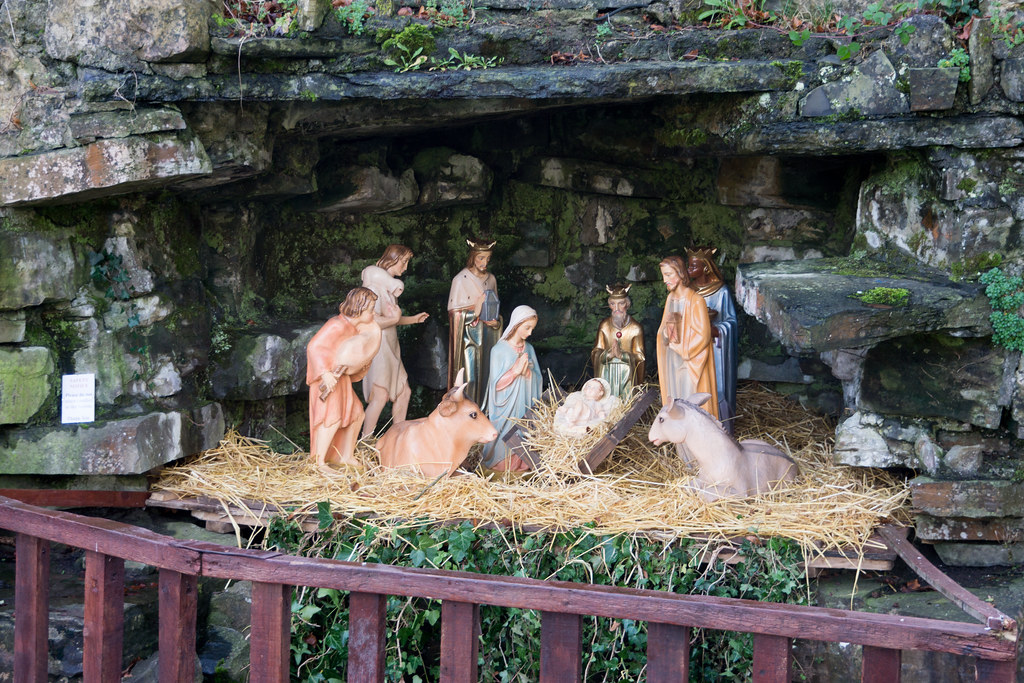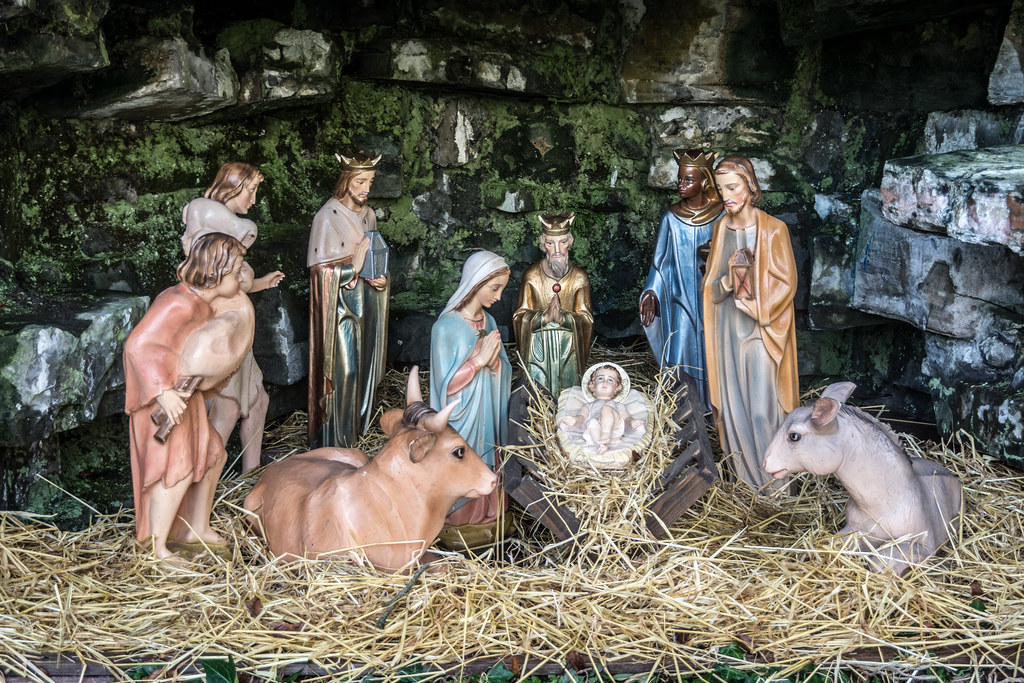THE TOWN OF TRIM - 2004
SELECT A CITY
CHRISTMAS CRIB - 2014
A nativity scene (also known as a manger scene, crib, crèche, or in Italian presepio or presepe) is the special exhibition, particularly during the Christmas season, of art objects representing the birth of Jesus.
While the term "nativity scene" may be used of any representation of the very common subject of the Nativity of Jesus in art, it has a more specialised sense referring to seasonal displays, either using model figures in a setting or enactments called "living nativity scenes" (tableau vivant) in which real humans and animals participate. Nativity scenes exhibit figures representing the infant Jesus, his mother Mary, and her husband Joseph. Other characters from the nativity story such as shepherds and sheep, and angels may be displayed near the manger in a barn (or cave) intended to accommodate farm animals, as described in the Gospel of Luke. A donkey and an ox are typically depicted in the scene, as well as the Magi and their camels, described in the Gospel of Matthew. Several cultures add other characters and objects that may be Biblical or not.
Saint Francis of Assisi is credited with creating the first live nativity scene in 1223, intending thereby to cultivate the worship of Christ, having been inspired by his recent visit to the Holy Land where he had been shown Jesus's traditional birthplace. The scene's popularity inspired communities throughout Catholic countries to stage similar pantomimes.
Distinctive nativity scenes and traditions have been created around the world and are displayed during the Christmas season in churches, homes, shopping malls, and other venues, and occasionally on public lands and in public buildings. In the United States, the Metropolitan Museum of Art in New York City and the Carnegie Museum of Art in Pittsburgh annually display Neapolitan Baroque nativity scenes, both of which originated from the collection of Eugenio Catello.
Nativity scenes have not escaped controversy. In the United States, nativity scenes on public lands and in public buildings have provoked court challenges.
While the term "nativity scene" may be used of any representation of the very common subject of the Nativity of Jesus in art, it has a more specialised sense referring to seasonal displays, either using model figures in a setting or enactments called "living nativity scenes" (tableau vivant) in which real humans and animals participate. Nativity scenes exhibit figures representing the infant Jesus, his mother Mary, and her husband Joseph. Other characters from the nativity story such as shepherds and sheep, and angels may be displayed near the manger in a barn (or cave) intended to accommodate farm animals, as described in the Gospel of Luke. A donkey and an ox are typically depicted in the scene, as well as the Magi and their camels, described in the Gospel of Matthew. Several cultures add other characters and objects that may be Biblical or not.
Saint Francis of Assisi is credited with creating the first live nativity scene in 1223, intending thereby to cultivate the worship of Christ, having been inspired by his recent visit to the Holy Land where he had been shown Jesus's traditional birthplace. The scene's popularity inspired communities throughout Catholic countries to stage similar pantomimes.
Distinctive nativity scenes and traditions have been created around the world and are displayed during the Christmas season in churches, homes, shopping malls, and other venues, and occasionally on public lands and in public buildings. In the United States, the Metropolitan Museum of Art in New York City and the Carnegie Museum of Art in Pittsburgh annually display Neapolitan Baroque nativity scenes, both of which originated from the collection of Eugenio Catello.
Nativity scenes have not escaped controversy. In the United States, nativity scenes on public lands and in public buildings have provoked court challenges.
SORRY FOR THE DELAY
As an Amazon Associate I earn from qualifying purchases
You will find links to buy products from Amazon, Google and other partners. If you click on these links, you’ll find that the URL includes a small extra piece of text which identifies that the click came from my websites. This text is an affiliate code, and it means that I get a small percentage of the money you spend if you choose to buy that product, or, in some cases, other products from the site soon after. These affiliate links help pay the costs of producing my websites and ensure that the content is free to you.
COPYRIGHT NOTICE APPLIES ONLY TO PHOTOGRAPHS

This work by William Murphy aka Infomatique is licensed under a Creative Commons Attribution-NonCommercial-ShareAlike 4.0 International License.
Permissions beyond the scope of this license may be available at https://excellentstreetimages.com/in-the-year-twentytwenty/copyright/.


